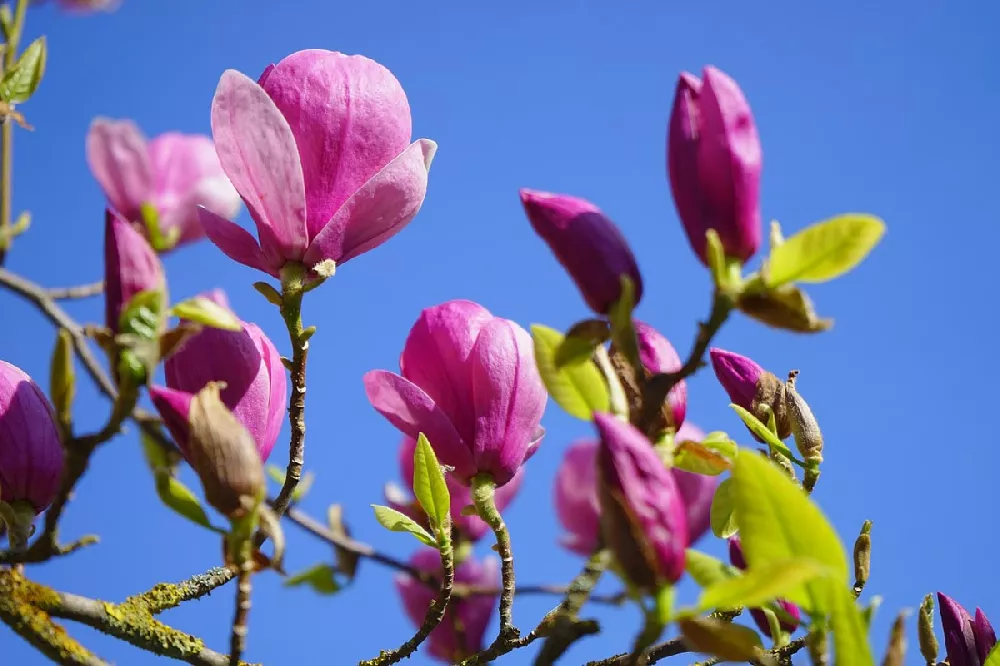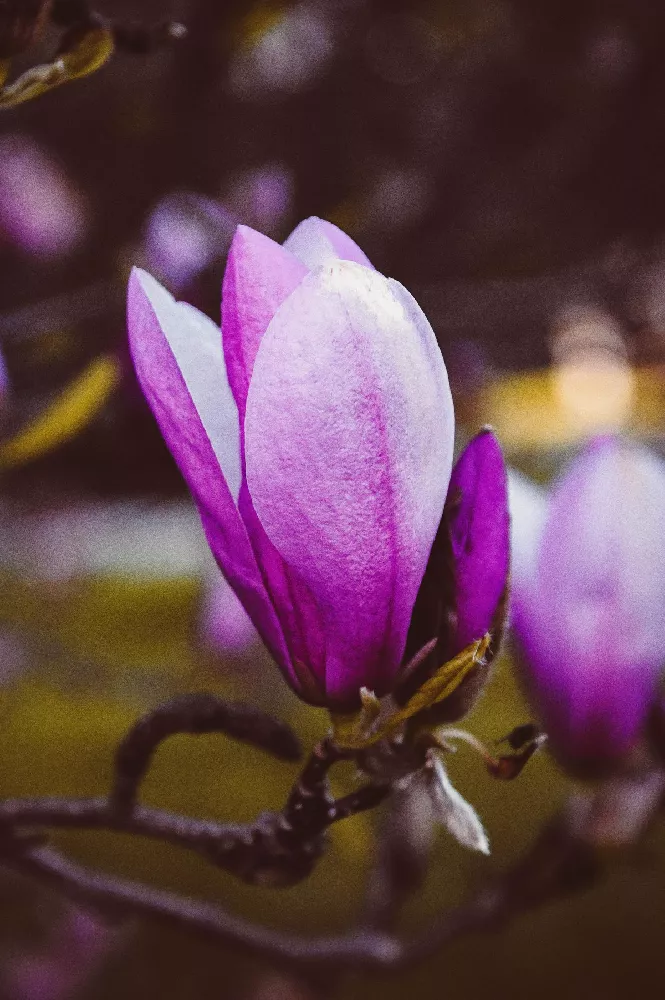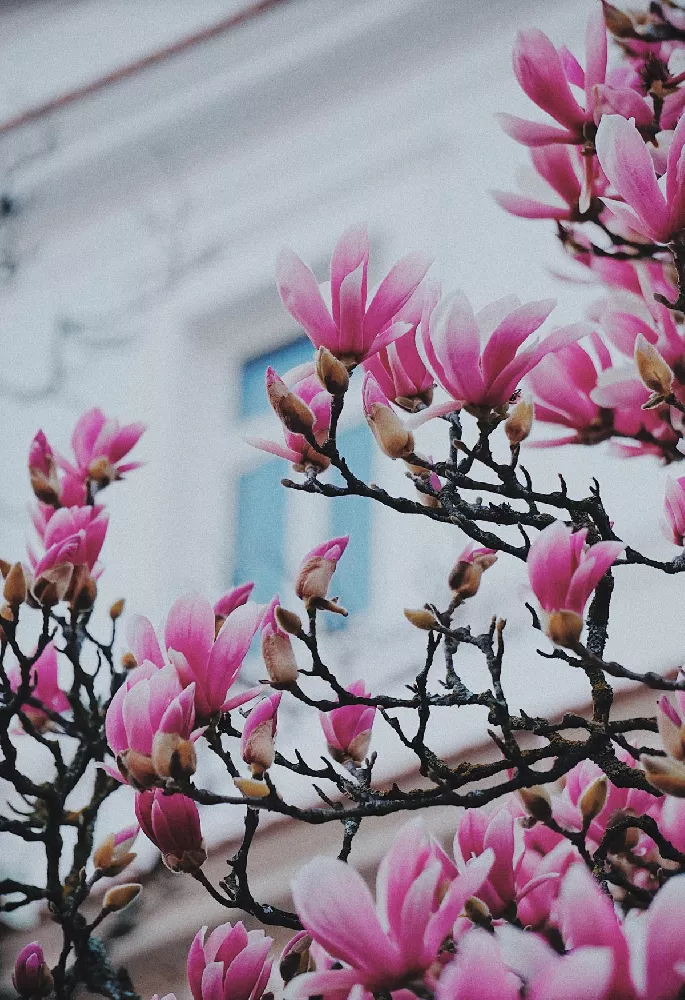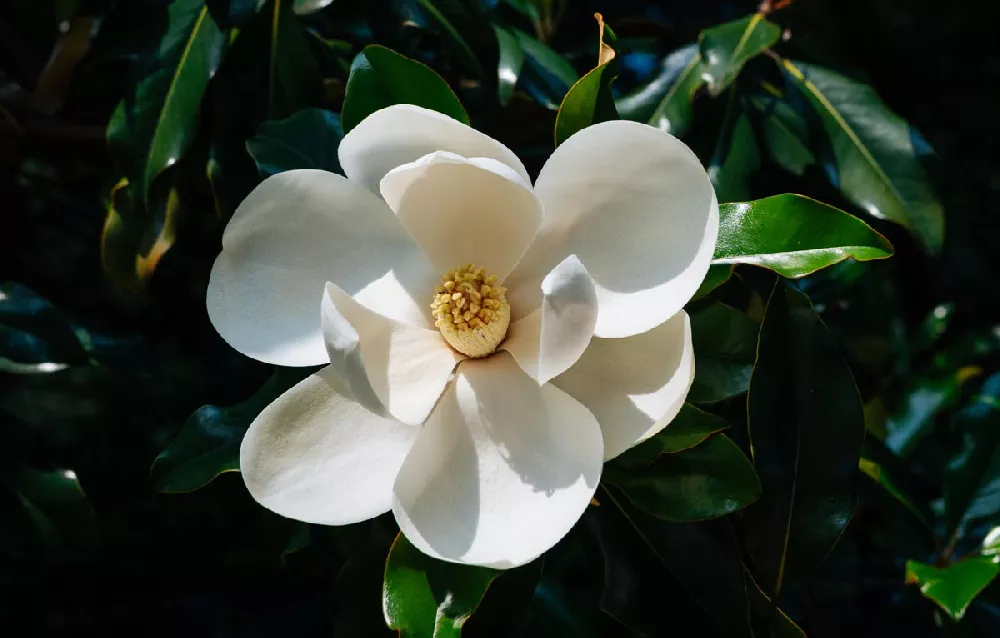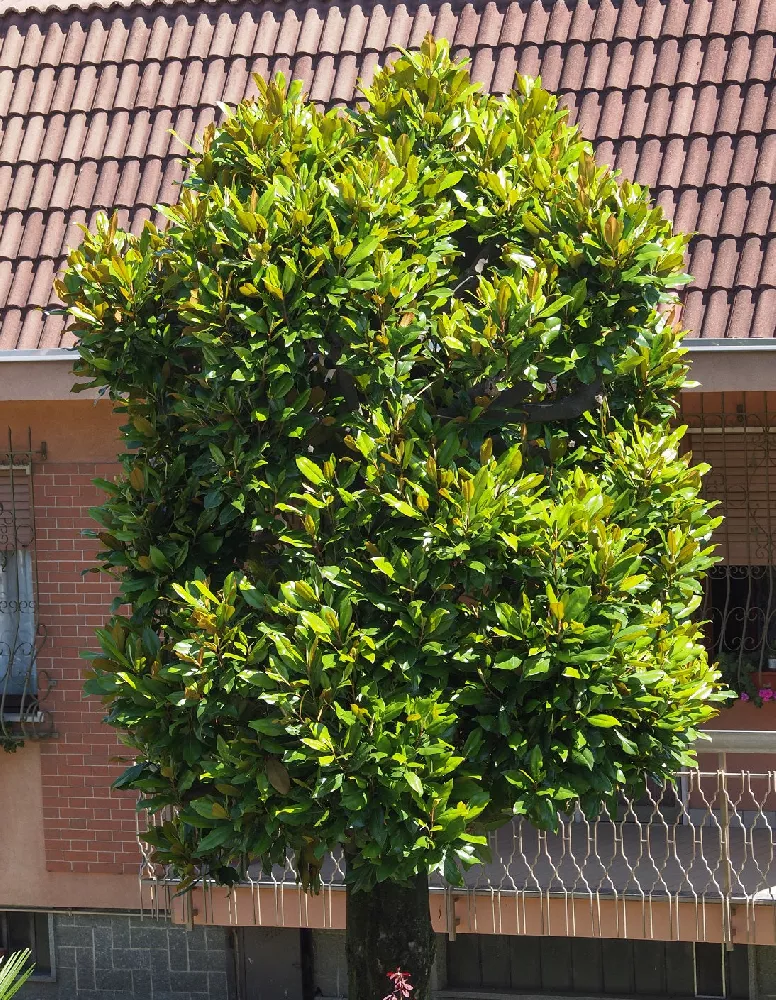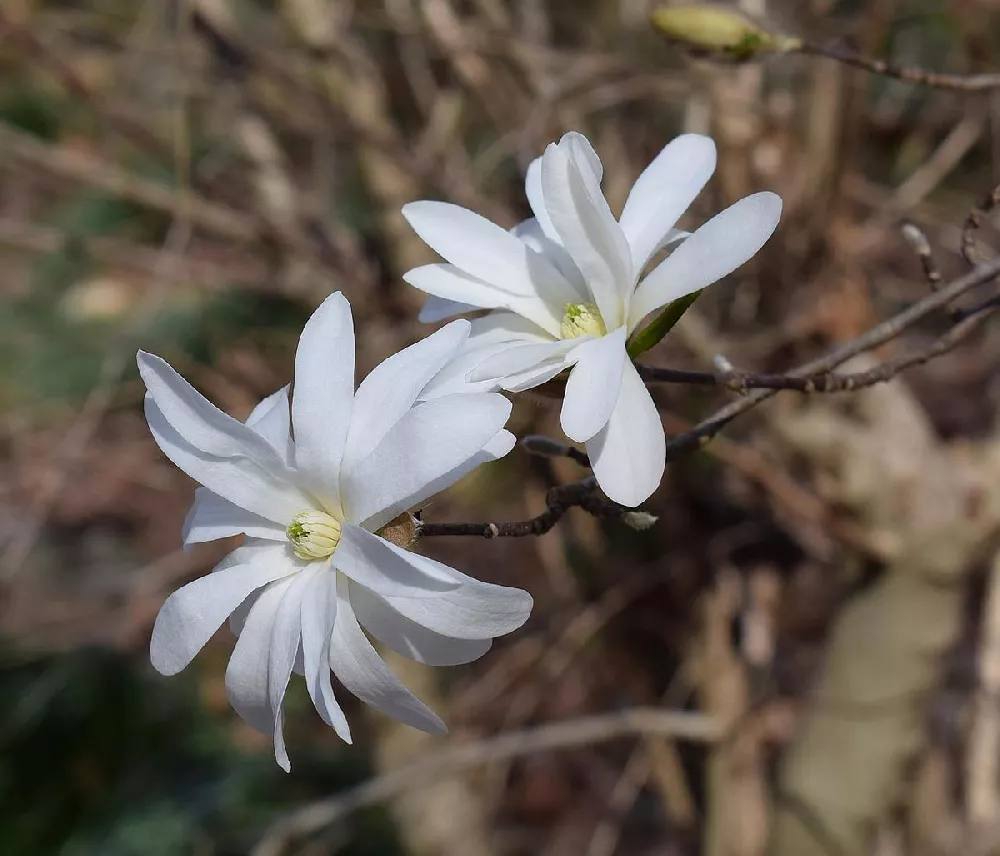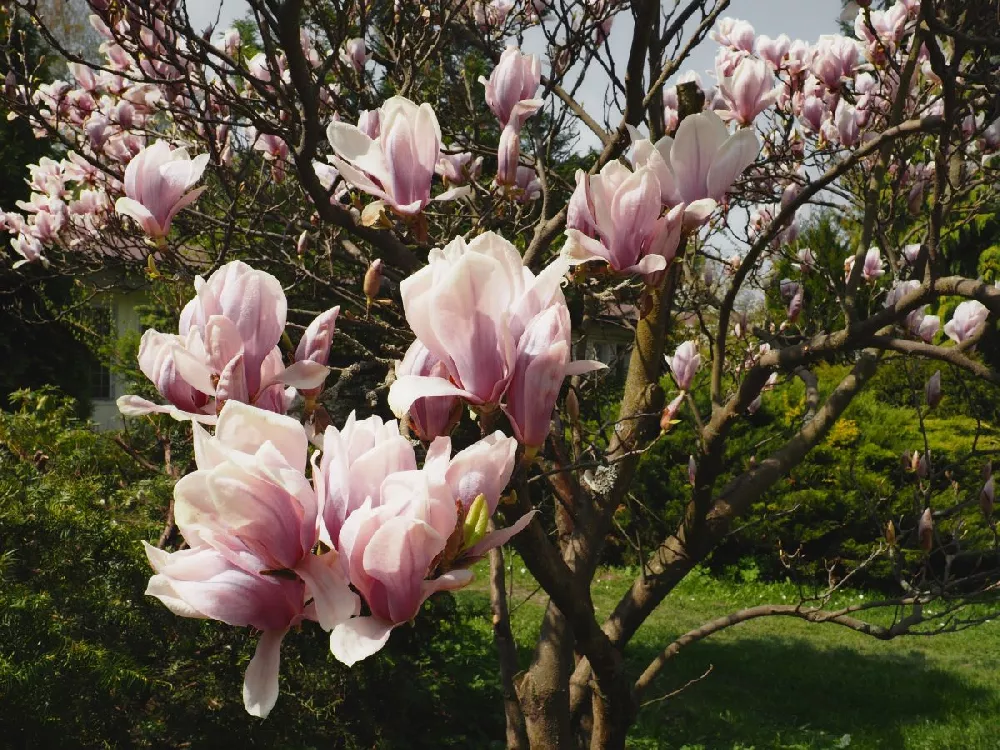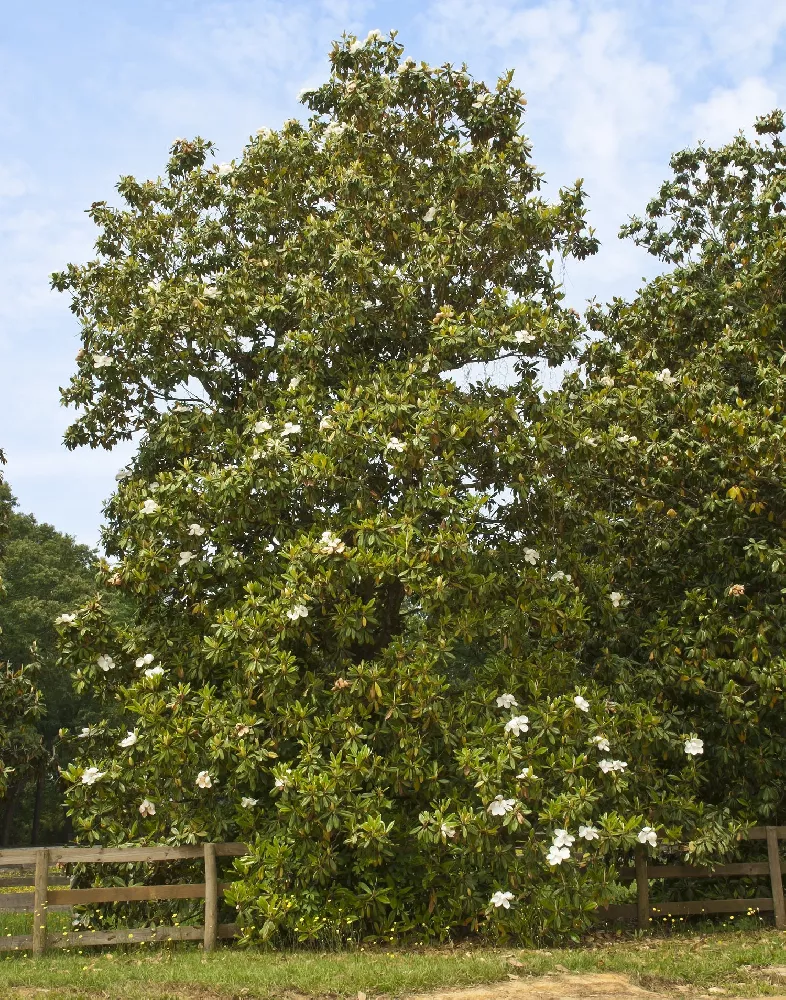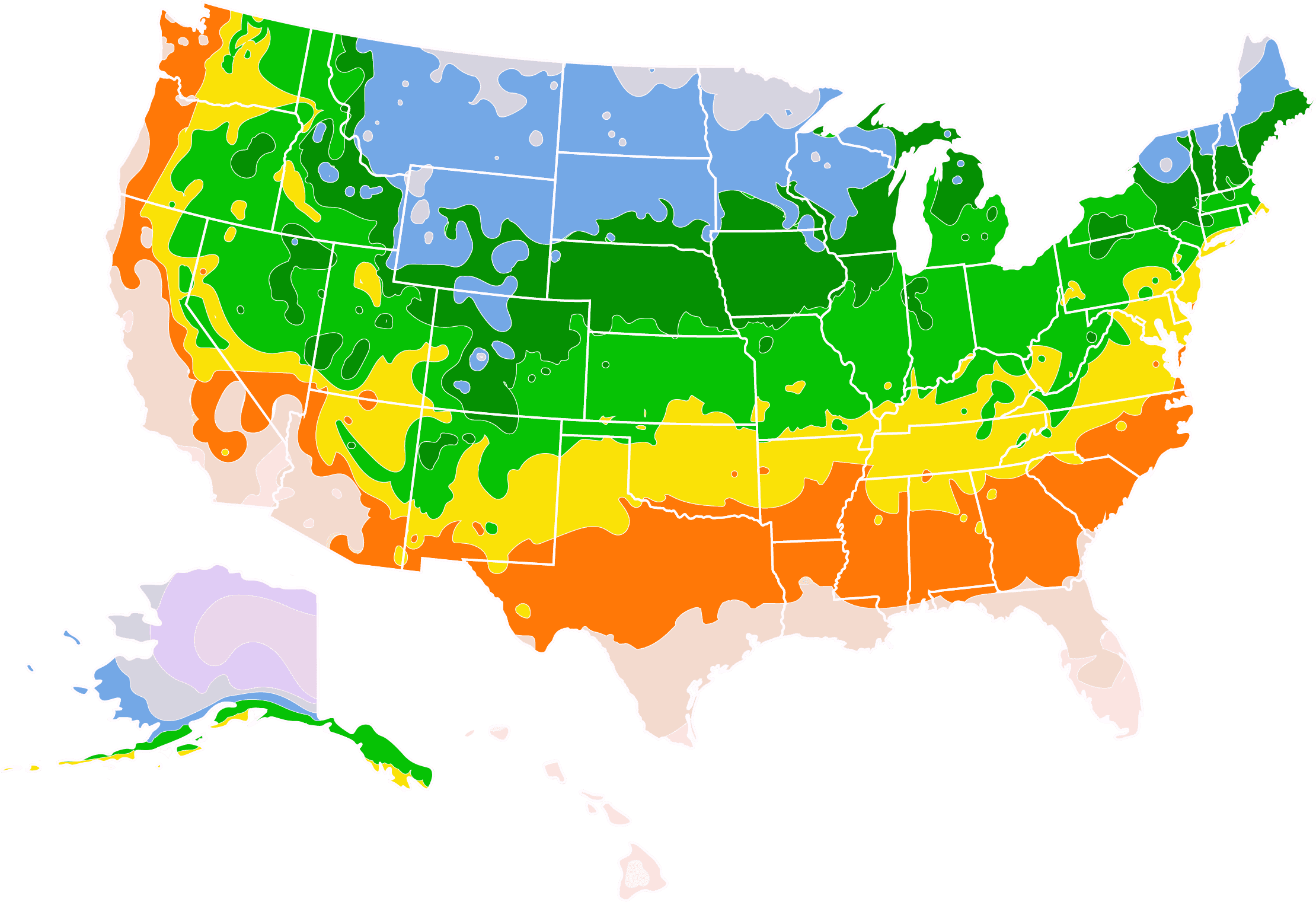Jane Magnolia for Sale - Buying & Growing Guide
- Ships in 1-2 days
- 1-Year Warranty Eligible
- Pots or accessories are not included unless specified in the product options.
Shipping Details:
Once your order is shipped, you’ll receive an email with a tracking number and estimated delivery date. Most orders ship immediately, but some items are seasonal and may only ship in spring or fall. These products are noted on the website.
It's hard to know where to start when listing all of the Jane magnolia's benefits. Unlike many magnolias, which can only be grown in the South, the Jane magnolia, Magnolia x 'Jane,' thrives throughout most of the continental United States, from USDA hardiness zones 4 through 8. Its petite size — maxing out at 10 to 15 feet high and 5 to 10 feet wide — makes it an excellent specimen tree in smaller yards. And in addition to all that, it offers a lengthy show of brilliant, deep pink blooms that arrive late enough in the spring that they're not bothered by frost — once again, a problem with other magnolias. Here are a few more reasons why the Jane magnolia deserves a place in your garden:
- It can be grown as a multi-stemmed bush or small tree.
- This magnolia is hardy down to -20 degrees Fahrenheit.
- It can even be grown as a patio plant in a large planter with no difficulty.
Plant Care
Sunlight

Although it can tolerate some shade, the Jane magnolia does best with four to eight hours of sun a day.
Watering
Water young trees once a week; mature trees only need watering in very dry or hot weather.
Fertilizing

Fertilize your Jane magnolia in early spring and early fall with a slow-release formula designed for acid-loving plants.
Planting and Care
Planting instructions
Site your Jane magnolia in soil that receives adequate sun (a minimum of four hours a day of direct light, though more is better). Jane magnolias are tolerant of all soil types, from clay to sand, but they like moist soil that drains well. Unpot your sapling and tease out any encircling roots, which can girdle the tree and slowly kill it. Dig a hole in your chosen location that’s as deep as the root ball and twice as wide. Place the tree in the hole, and, while holding it upright and steady, fill in around it with topsoil mixed with well-rotted compost or manure, tamping down as you go to eliminate air pockets. Water thoroughly. Apply a 2- to 3-inch layer of an organic mulch, such as bark chips, around the root zone to conserve moisture, taking care that it does not touch the trunk.
Watering and nutrients
Water newly-planted Jane magnolias several times a week for the first few weeks, until you see new growth starting to form. After that, taper back to once a week during the growing season, unless you’re experiencing extreme heat or drought — in which case increase your watering. You shouldn’t need to water your Jane magnolia during the winter. Fertilize your tree in spring and fall with a slow-release fertilizer that’s designed for acid-loving plants.
Pollination
Magnolias are an ancient family of plants, and their strategy for pollination dates back to millions of years ago, before the days of honeybees and other common pollinators of today. Their showy, fragrant flowers instead attract insects such as flightless beetles, which wander from flower to flower, distributing pollen as they go. Pollinated flowers then develop into cone-shaped structures that contain the seeds.
Pruning
Jane magnolias should be pruned sparingly. Remove dead, diseased, or damaged branches whenever you see them, as well as branches that rub against each other. Other than that, you should not need to prune your tree unless you are trying to keep it to a smaller silhouette as a container-grown specimen.
Pests and diseases
Jane magnolias are generally sturdy plants that have little problem with pests or diseases. Common insects that may be seen on them include weevils, thrips, and scale insects. A healthy tree can generally fend off infestations. If desired, releasing beneficial insects, such as ladybugs or parasitic wasps, can be helpful in dealing with unwanted insects. Diseases that may attack magnolias include canker, powdery mildew, and leaf spot. Application of a copper fungicide may help with fungal diseases, such as mildew.
Achieving maximum results
There are many ways to use a Jane magnolia in your garden or landscape. If your space is severely limited, consider growing one or two in large decorative containers. A light pruning in spring will help keep them to a small and manageable size. When grown in the ground, they can serve as a border plant, and they make a lovely informal hedge or privacy screen when planted about 6 feet from each other. As a specimen plant, they have no equal, delighting the eye with their long-lasting blooms. Consider planting a grouping of three in a front yard, surrounded by low-lying plants that will complement their blooms and can thrive in partial shade, such as ferns, hostas, or astilbes. Jane magnolias are also appealing along the edge of a woodland, where they should be fine in the dappled sunlight they receive.
FAQs
Is it better to grow my Jane magnolia as a tree or shrub?
Your best bet is to allow the plant to develop several primary trunks, in which case it should grow into a pleasantly rounded silhouette when mature. Constraining it to a single trunk is possible, but you may not achieve the fullness of form that you will if you let the plant develop more naturally.
Can Jane magnolias bloom twice a year?
They can, yes. You'll have a primary bloom in spring which will fill your tree with bright flowers. If conditions are right, you'll have a second bloom during the summer. Between the two, you can expect to have flowers on your magnolia for much of the growing season. As an added bonus, in fall, the leaves will turn from their usual dark green to bright yellow and even copper, giving you more color.
Are Jane magnolia roots invasive?
Magnolias have a reputation for having invasive roots, but the challenge is more pronounced with the larger cousins of the Jane magnolia. Some magnolias can reach as high as 80 feet, and for a tree of that size, the roots need to be quite extensive to anchor it properly in the soil. The Jane magnolia, on the other hand, reaches a maximum of 15 feet, and thus has a correspondingly smaller footprint for its roots. However, magnolia roots in general spread wide rather than deep, so it's best not to plant your Jane magnolia too near your house or any other structure.
Compare Similar Products
You can't add more Product Name - Product size to the cart.
OK